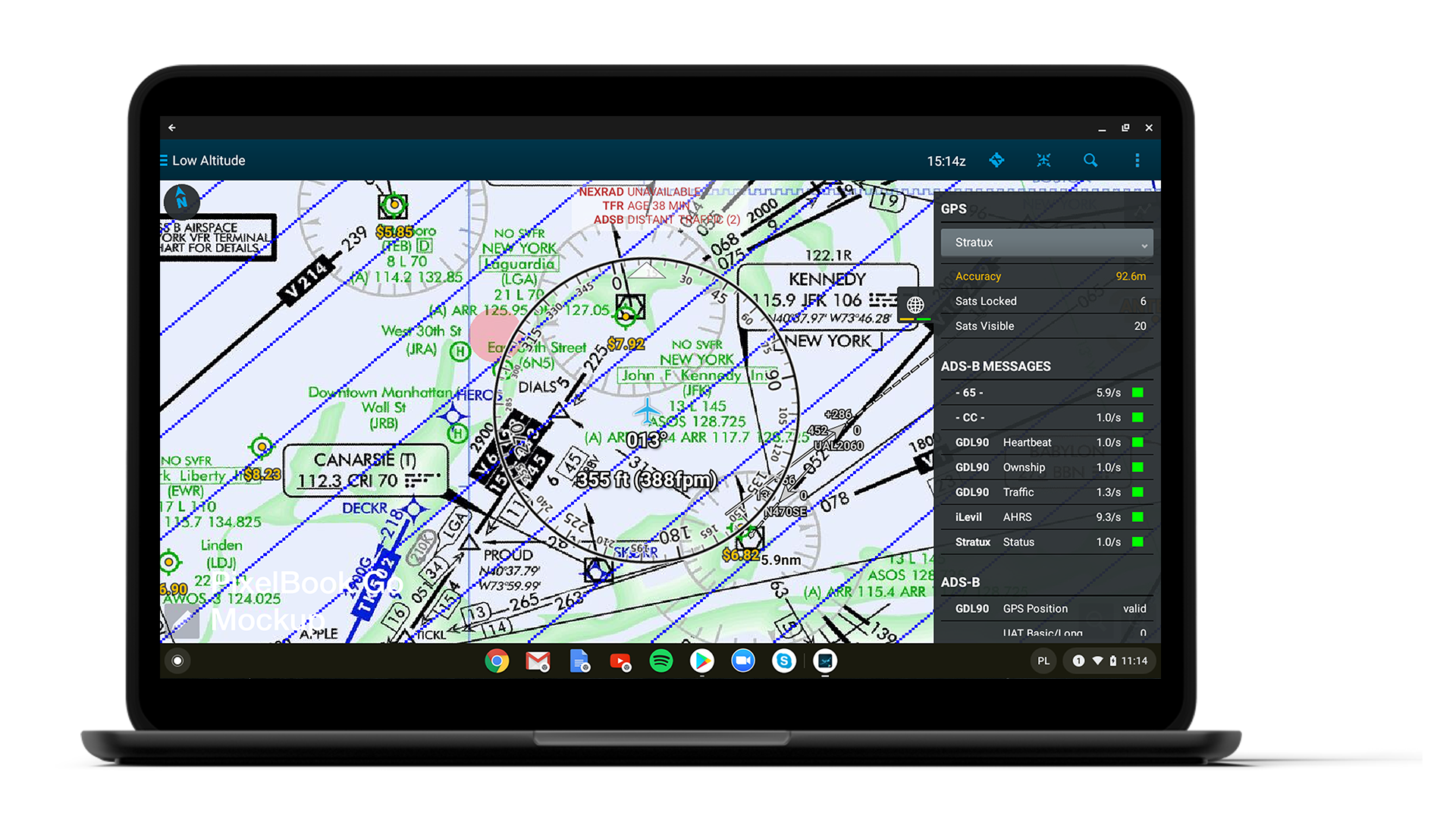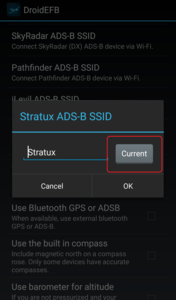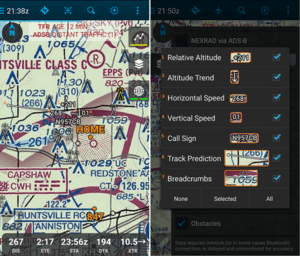OVERVIEW
ADS-B is transforming all segments of aviation. Connect and display Real-time ADS-B on your ChromeOS device!
NOTE: Helper apps as well as other applications running at the same time as DroidEFB may cause interference.
ADS-B INFO: ADS-B Interactive Coverage Map (ICM)
Before we begin, you need to connect your ChromeOS device to WiFi or Bluetooth. Here is how to do that:
Step 1: Turn on Wi-Fi
- At the bottom right, select the time.
- Select Not Connected
.
Note: If you see your Wi-Fi network name and a signal strength, your Chromebook is already connected to Wi-Fi. - Turn on Wi-Fi.
- Your Chromebook will automatically look for available networks and show them to you in a list.
Step 2: Pick a network and connect
Connect to an open network
Connect to a secure network
- Select the secure Wi-Fi network
.
- Type the network password.
- Select Connect.
Connect to an unlisted network
Administrators may hide networks so only certain people can use them. To connect to an unlisted network:
- Select Join other network
.
- Enter the network information in the box that appears.
- Select Connect.
Information for this network is automatically saved so you can connect automatically later.
Connect to a WPA2 enterprise network
Step 1: Check if your certificate is installed
- Open Chrome
.
- In the address bar, type
chrome://settings/certificatesand press Enter. - Select Authorities.
- Using information from your administrator, look for your server certificate in the list. If the server certificate isn’t installed, your administrator might ask you to install the server certificate.
- [Optional] If you’re connecting to an EAP-TLS network, you might need to install the user certificate.
Step 2: Connect to the network
- At the bottom right, select the time.
- Select Settings
.
- Under “Network,” select Add connection
Add Wi-Fi
Advanced.
- Enter your network information.
- If the server certificate is installed, in the “Server CA certificate” field, choose Default.
- Select Connect.
Once you get that done, open the DroidEFB app and follow the steps below.
1. After connecting to the ADSB device via WiFi or Bluetooth, navigate to Menu > Preferences > Device Settings.
2. In the device settings menu, touch Stratux ADS-B SSID (Stratux is a common protocol used by many popular devices but choose other devices such as iLevil, Pathfinder and SkyRadar, as required). We recommend leaving ADS-B Device Interprets Traffic unchecked. The Use Bluetooth GPS or ADSB option should only be checked if pairing to an ADS-B device via Bluetooth, such as with Dual XGPS 190.
3. After selecting the desired ADS-B SSID, an option to input the device SSID will appear. Touch Current to automatically match the current WiFi connection SSID. The SSID should contain the name of the ADSB device the Android device is connected to such as, Stratux-NumbersCharacters. Select OK.
4. Go back to the chart view and the option to Pick a GPS Source will automatically appear (this step is the same if connecting to an ADSB device via Bluetooth or WiF). Choose either Stratux or Internal (option may be Stratux or other device, depending on option selected above). Internal GPS may work best if the ADSB device doesn’t have reliable GPS.
5. Open the Layers Tab to choose NEXRAD via ADS-B and ADS-B Traffic details to be displayed on the Chart.
6. Open the Senors Tab to view ADSB device details or change GPS source. The horizontal lines on the Sensors Tab indicate GPS and ADSB status.
7. When traffic appears, the top center of the screen identifies the number of targets and identifies them as distant (grey) distant, (cyan) close, (yellow) alert.










